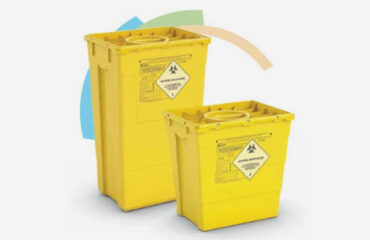Excitement About Reclaim Waste
Excitement About Reclaim Waste
Blog Article
The Buzz on Reclaim Waste
Table of ContentsNot known Details About Reclaim Waste Some Of Reclaim WasteThe Best Strategy To Use For Reclaim WasteOur Reclaim Waste StatementsSome Known Details About Reclaim Waste
Check out the kinds, incidents, and forms of liquid waste. Residential sewage waste describes the waste and products from a household septic storage tank. This sort of waste is created by human beings in homes, colleges, and various other buildings. This only includes septic containers that have a drain area. The proper monitoring and disposal of domestic sewer waste call for liquid waste to be transferred to a sewage treatment plant where the correct approaches and equipment are put on detoxify and deal with waste.
Commercial waste commonly consists of potential risks, such as combustible materials or a blend of liquid and solid waste items, and needs a more innovative and thorough disposal process. The disposal of business waste usually entails the filtration of waste prior to transportation to make sure secure and proper disposal. Industrial waste is created from by-products and overflow of industrial processes and manufacturing.
This sort of waste can not use the very same sewage management transportation or processes as septic or industrial liquids. The industrial waste management process calls for the inspection and testing of liquid waste prior to it undertakes the disposal procedure (liquid waste removal melbourne). Runoff waste is the liquid waste that comes from drainage and excess stormwater in very booming locations or cities
Drainage waste can create contamination and flooding if not taken care of properly. Guaranteeing proper waste administration can protect against calamities and minimize environmental harm.
The 15-Second Trick For Reclaim Waste
Get in touch with PROS Providers today to find out about our waste administration and disposal services and the proper methods to look after the liquid waste you generate.
(https://businesslistingplus.com/profile/reclaimwaste1/)Do you understand what occurs to your water when you disengage, purge the toilet or drain pipes the washing maker? No? Well, it deserves understanding. This so-called 'wastewater' is not just an important resource yet, after treatment, will be launched to our land, waterways or the sea. Used water from commodes, showers, baths, cooking area sinks, laundries and industrial procedures is called wastewater.

water used to cool down machinery or tidy plant and tools). Stormwater, a form of wastewater, is overflow that flows from farming and city areas such as roofing systems, parks, gardens, roadways, courses and seamless gutters into stormwater drains, after rain. Stormwater moves untreated directly to regional creeks or rivers, eventually getting to the sea.
Reclaim Waste Fundamentals Explained
In Queensland, most wastewater is treated at sewage treatment plants. Wastewater is transported from residential or industrial websites via a system of drains and pump stations, called sewerage reticulation, to a sewage treatment plant. Neighborhood federal governments develop, preserve and run most sewage therapy plants. Operators are certified under the Environmental Management Act 1994 to release cured wastewater at an acceptable environmental standard right into rivers.
The Division of Natural Resources suggests local federal governments concerning handling, operating and preserving sewerage systems and treatment plants. In unsewered locations, city governments might require owners to install private or house sewer therapy systems to deal with domestic wastewater from bathrooms, kitchens, shower rooms and laundries. The Division of Natural Resources authorises the usage of household systems when they are verified to be efficient.
A lot of stormwater obtains no treatment. In some brand-new neighborhoods, therapy of some stormwater to remove litter, sand and crushed rock has actually begun making use of gross toxin traps. Wastewater therapy occurs in click here for info 4 phases: Gets rid of solid issue. Larger solids, such as plastics and other things incorrectly released to sewage systems, are eliminated when wastewater is gone through displays.
Wastewater after that flows right into large storage tanks where solids settle and are eliminated as sludge. Grease and scum are skimmed from the surface area. Uses little living organisms called micro-organisms to damage down and eliminate remaining dissolved wastes and great particles. Micro-organisms and wastes are integrated in the sludge. Gets rid of nitrogen and phosphorus nutrients that could create algal flowers in our rivers and intimidate water life.
The Buzz on Reclaim Waste
Nutrient elimination is not available in all sewer treatment plants because it requires costly specialized tools. It is coming to be a lot more usual in Queensland. Clear fluid effluent generated after therapy might still have disease-causing micro-organisms. If this effluent is launched right into rivers such as rivers or the sea, the micro-organisms will at some point pass away out.

A lot of wastewater flows right into the sewage system. Under the Act, regional governments carry out approvals and licences for ecologically relevant activities (ERAs) entailing wastewater releases that could have a local impact.
The Definitive Guide to Reclaim Waste
Monitoring provides accurate info concerning water top quality and can validate that licence problems are being met. The information acquired with tracking offers the basis for making water high quality choices.
Report this page